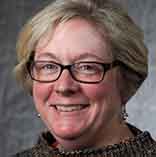13 September 2021
Back to college: Positive pedagogy in the face of social change
Dr Cynthia Bates
Professor of the Arts & Chair of Media, SUNY Empire State College
As faculty around the world head back to class this fall, the foundational shift in our lives and our students’ lives caused by the ongoing COVID-19 pandemic needs to be acknowledged. Our world has forever changed and so should our pedagogical approaches to teaching. This article offers some methods for shifting your pedagogy to embrace 'positive pedagogy' which offers ways to care for ourselves and our students regardless of mode (in-person, virtual, or hybrid).
What is positive pedagogy?
According to Lea Walters in the open access book Positive Education Pedagogy: Shifting Teacher Mindsets, Practice, and Language to Make Wellbeing Visible in Classrooms, "Positive Education Pedagogy reflects the idea that how a teacher educates, not just what is taught, is a key factor in building student wellbeing." While this decade-old field has primarily seen growth in primary/K-12 education and in sports education, it is beginning to take hold in higher education as well.
Why do we need positive pedagogy?
Since the onset of the COVID-19 pandemic, people around the world have experienced tremendous crisis and grief. In addition to this horrific global pandemic, many have also witnessed atrocities such as public shootings and terrorist attacks along with mass destruction due to wildfires, floods, and hurricanes. Given all we and our students have been through, I believe that our classrooms need to be places where we can all grow emotionally and psychologically as well as in the specific knowledge and skills taught in each course.
The students returning to our classroom this fall are survivors. Some are still deeply hurting while others are rising from their experiences. Wherever your students fall on this spectrum, our pedagogical strategies need to shift so we meet our students 'where they are' in their personal, educational, and professional lives.
Take care of you! (otherwise known as advice from the airlines)
The first tenet of positive pedagogy is to take care of yourself so you can help others grow. Anyone who has flown on a plane has surely heard some version of the statement: Should the cabin lose pressure, oxygen masks will drop from the overhead area. Please place the mask over your own mouth and nose before assisting others.
As a mom, this request has always struck me as counter intuitive. My instinct is to protect my child first and then myself. As a teacher, I’m often in the same boat. But from a public safety and mental health perspective, we hear this advice often: if we don’t take care of ourselves first, we risk the inability to care for others. During the pandemic, faculty burnout has become its own crisis and for performing arts professors, this burnout carries a special weight. Day after day of trying to teach an inherently physically interactive craft online while fielding the devastating stories of our students has proven to be too much for many. We listen empathetically, we refer students to resources, we cut students breaks in their assignments and due dates. Ultimately, however, the heft of the pain and loss our students share with us can be too much to bear.
One way to begin protecting ourselves from burnout is to unplug. I know, easier said than done. Working from home has encouraged many to work longer, more irregular hours. In the Spring 2021 term, I fell asleep at my computer well after midnight many nights a week; I was surely not alone. Then one day, the dean of my department, Dr. Nicola Marae Allain, asked us all to refrain from sending emails outside of business hours and on weekends. The result was amazing: there was almost no flooding of our email inboxes overnight. Some tools to help you manage email are:
- Send Later – Our email system has a feature to allow us to write an email and then schedule it to be sent later. So, while many of us continued to work after hours, we could queue up our correspondences to be sent during business hours the next day.
- Out of Office – Choose two (or more!) days a week and put on your out of office automatic response. Train students and colleagues to expect that your weekends or other days off are exactly that: days off!

Meet your students 'where they are'
Another tenet of positive psychology is to embrace the whole student and not merely engage with the knowledge and skills being offered in the course. When I began teaching at SUNY Empire State College in 2007, I quickly learned the phrase 'meet your students where they are.' SUNY Empire teaches a wide range of students aged from 18 to 90+ and who come to us with an even wider range of academic, emotional, and social skills.
Here are some practical strategies for embracing the whole student*:
- Meet one-on-one with your students before or during the first week of classes to begin getting to know the whole student.
- Give students a questionnaire that allows them to identify what they wish to be called, what they hope to learn, and any other fun facts or important information they wish to share. Make this private/individual OR use online forms/surveys to make this kind of information sharing fun for students (i.e. word clouds, live polling, live Q&A such as Slido, spin-to-win games, virtual photo booths, virtual scavenger hunts, etc.)
- Have students interview one another in the first week of class and then to introduce their new friend to the rest of the class.
- Engage the class in low-stress group projects early in the term to encourage community building.
- As you provide written feedback on papers and projects, make a connection between knowledge/skills the student has demonstrated and the goals or information the student provided when the course began.
- Give your students individual verbal feedback, letting them know you see them as a whole person and not merely as the recipient (or even active participant) of the knowledge and skills being taught in the class.
The key, however, in any of these efforts, is that you – as the faculty member – needs to embrace the whole student by demonstrating that you have taken the time to learn about and remember each student.
Positive pedagogy in practice
However you choose to implement pieces of positive pedagogy into your classroom, remember that mental health care is vital when we or our students are in crisis or experiencing difficult situations. Colleges have taken great steps in the past decade to provide mental health care to students and even more steps in reaction to COVID. But what about for faculty?
During COVID, many of us experienced increased teaching loads, more service to the college, and higher demands when caring for our students. We need to make sure that we take steps to resize our loads and care for each other. If there are initiatives at your college to help faculty recover from our changed teaching lives and care for each other, please reach out and let me know. Together, we can help each other.
*The Carnegie Mellon University's Eberly Center offers some excellent advice for "Getting to Know Your Students as Individuals."
Related blogs
5 silly icebreakers for Theatre & Performance students
As we step into the theatre classroom, what could be better for getting going than some playful fun...
Read moreCreative Drama Exercises for Your KS3 Classroom
With September just around the corner, it’s almost time to return to the classroom - and over the...
Read moreTeaching Theatre: top 5 blog posts of 2022
Searching for some new teaching inspiration? In need of some ready-to-go practical activities to...
Read moreGet the latest teaching tips straight to your inbox
Explore free lesson ideas and inspiration, education news, teaching trends and much more by signing up to regular blog updates!





%20(11).png)
.png)
